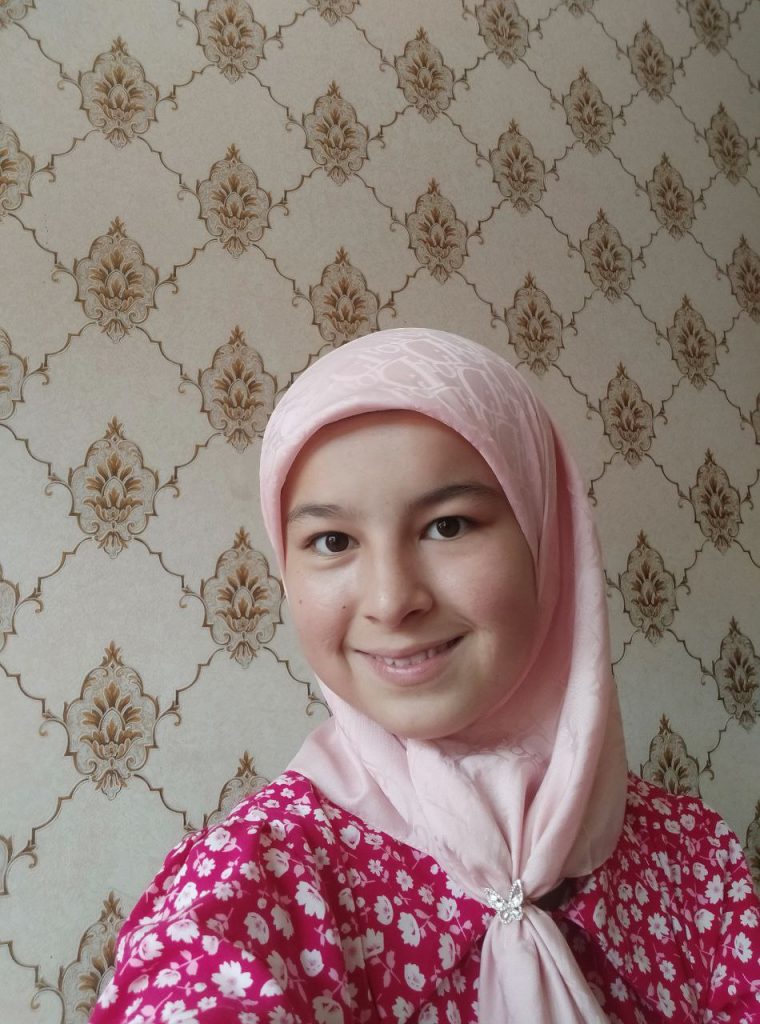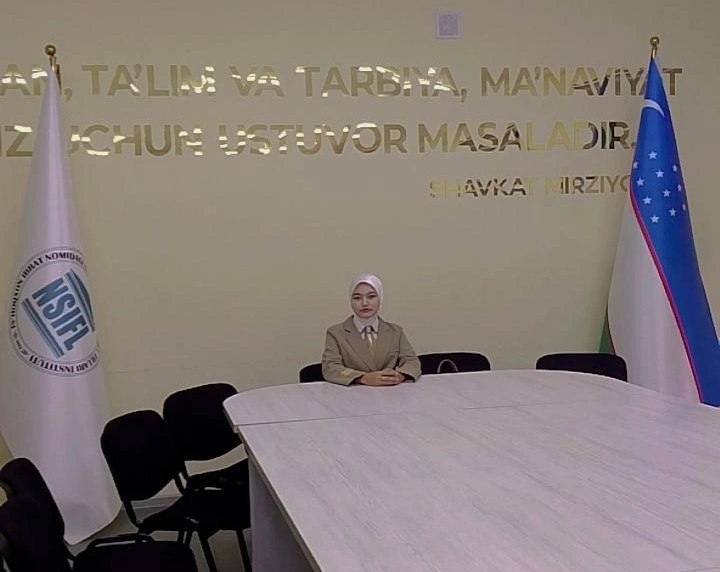
How Feedback Can Help Students Speak Better: A Practical Look at EFL Classrooms
Nasirova Xurshedabonu Sharof qizi
Student of Samarkand State Institute of Foreign Languages
Samarkand, Uzbekistan
Abstract: For many students studying English as a foreign language, speaking fluently and clearly is one of the most difficult obstacles. While grammar drills and vocabulary lists might help, the quality of feedback students get is frequently what determines true progress. This essay looks at how timely, insightful, and well-delivered criticism may help students develop their speaking abilities. Drawing on current research and classroom experiences, the study demonstrates how various sorts of feedback, whether from teachers or peers, may help learners become more fluent, accurate, and motivated. It also examines frequent obstacles that instructors experience while providing feedback and suggests practical solutions that might make a difference in the classroom. In summary, the correct feedback may help a hesitant speaker become a confident communicator.
Keywords: Speaking skills, feedback, EFL students, motivation, peer support, language teaching, fluency, error correction
INTRODUCTION
Speaking is generally the most challenging ability for language learners. Unlike writing or reading, speaking requires rapid thought, confidence, and the ability to articulate ideas in real time. Many students in EFL (English as a Foreign Language) schools struggle to discover their voice, not because they lack information, but because they are unsure how to utilize it. This is where the feedback comes in. Good feedback does more than only point out flaws; it also helps learners progress. As studies has demonstrated (Hattie & Timperley, 2007), feedback is one of the most effective methods a teacher can employ to increase student achievement. This research investigates how feedback may help students enhance their speaking skills and how it can be used effectively in modern classrooms.
METHODOLOGY
To investigate the effect of feedback on speaking abilities, a mixed-methods approach was adopted. Quantitative data were acquired via pre- and post-feedback speaking examinations, while qualitative data were gained through classroom observations and student interviews. The research looked at two groups of EFL learners: one got corrective feedback (for pronunciation, grammar, and vocabulary problems), while the other received constructive feedback (for fluency, clarity, and language usage in context). The data were evaluated to compare increases in speaking performance and student involvement across both groups.
RESULTS AND DISCUSSION
1. Impact of Corrective Feedback
Corrective feedback is vital for encouraging pupils to more accurate language use. Typically, the teacher will intervene directly to point out particular mistakes in grammar, pronunciation, or vocabulary and recommend the proper form. In this study, students who got continuous corrective feedback shown significant progress in their ability to create grammatically correct sentences and use new vocabulary effectively. After repeated warnings and practice, learners who often misused verb tenses such as “I go yesterday” were able to correct themselves. Pronunciation mistakes, such as confusion between /θ/ and /s/ sounds, have decreased with time. While critical criticism can make students feel self-conscious, when offered in a helpful and polite manner, it helps them absorb right structures and build long-term accuracy. Teachers discovered that incorporating correction into communicative activities, rather than interrupting pupils while speaking, made feedback more effective and less threatening.
2. Impact of Constructive Feedback
Constructive feedback encourages students to express themselves freely by recognizing their strengths and gently assisting them to address their weaknesses. Unlike corrective criticism, this sort of feedback does not require frequent interruption and instead promotes pupils’ fluency, confidence, and communication ability.
In the observed courses, students who received constructive comments were more open in conversations, tried lengthier replies, and took more chances with language. Instead of stating “That’s wrong,” teachers can say, “That was a great idea—let’s try saying it with the past tense.” This positive framing reduced students’ anxiety of making errors and increased their willingness to talk. The classroom setting became more casual and student-centered. Over time, learners demonstrated not just greater fluency, but also improved interaction skills such as turn-taking, subject management, and spontaneously responding to inquiries – all evidence of increasing confidence and genuine communication ability.
3. Feedback Timing and Frequency
The timeliness of feedback is as crucial as the content. Feedback can be offered immediately or later, either at the end of the exercise or in the next class. Each has their advantages. Immediate feedback enables students to recognize and rectify their faults in real time, which can be beneficial for pronunciation or word choice. For example, if a student says, “He went to school yesterday,” a simple answer like, “He went?” might inspire self-correction. In contrast, delayed feedback fosters reflection. Teachers may take notes during a speaking assignment and then address frequent faults with the entire class to minimize personal shame and promote deeper learning. The frequency of feedback is also important; too little, and kids do not improve and feel overwhelmed.
4. Peer Feedback
Peer feedback enables students to collaboratively reflect on one another’s performance. It fosters not just their listening and analytical abilities, but also a deeper feeling of classroom community. When students give each other feedback, such as pointing out a misused term or suggesting a cleaner sentence structure, they learn to pay more attention to language. In the research, peer feedback was frequently employed in pair or group projects. Students were given short checklists or suggestions like “Did your partner speak clearly?” “Did they use the past tense?” and “What did they do well?” This kept the feedback session focused and positive. Peer feedback also increased self-awareness, as students were more aware of their own speaking habits when assessing others. Importantly, students reported feeling more at ease taking advice from peers than from professors, which helped reduce nervousness and boost engagement in speaking activities.
CONCLUSION
In conclusion, feedback is critical for helping EFL students acquire improved speaking abilities. Whether it is corrective feedback, which improves accuracy and pronunciation, or positive feedback, which increases confidence and fluency, each type has distinct advantages when utilized correctly. Timing and consistency of feedback are also important, since quick input can drive real-time modifications, but delayed feedback stimulates deeper thinking. Furthermore, using peer feedback promotes teamwork, self-awareness, and a more supportive classroom climate. Together, these feedback mechanisms provide a well-balanced strategy that not only improves student speaking but also promotes motivation to engage. Using a variety of feedback approaches strategically and consistently may help teachers transform speaking practice into a more successful, engaging, and learner-centered experience.
REFERENCES:
1. Hattie, J., & Timperley, H. (2007). The power of feedback. Review of Educational Research, 77(1), 81–112.
2. Lyster, R., & Saito, K. (2010). Oral feedback in classroom SLA: A meta-analysis. Studies in Second Language Acquisition, 32(2), 265–302.
3. Min, H. T. (2005). Training students to become successful peer reviewers. System, 33(2), 293–308.
4. Tee, M. Y., Loo, T. E., & Yap, Y. F. (2019). Oral feedback strategies and learner motivation in speaking classes. International Journal of Instruction, 12(1), 1–18.
5. Vygotsky, L. S. (1978). Mind in Society: The Development of Higher Psychological Processes. Harvard University Press.
6. Azizxo‘jaeva, N. N. (2006). Pedagogik texnologiyalar va pedagogik mahorat. Toshkent: TDPU nashriyoti.
7. Qurbonov, S. Q. (2012). Til o‘rgatishda innovatsion yondashuvlar. Samarqand: Zarafshon nashriyoti.
8. Xasanboyeva, Z. X. (2019). Chet tilini o‘qitish metodikasi. Toshkent: Fan va texnologiya nashriyoti.





